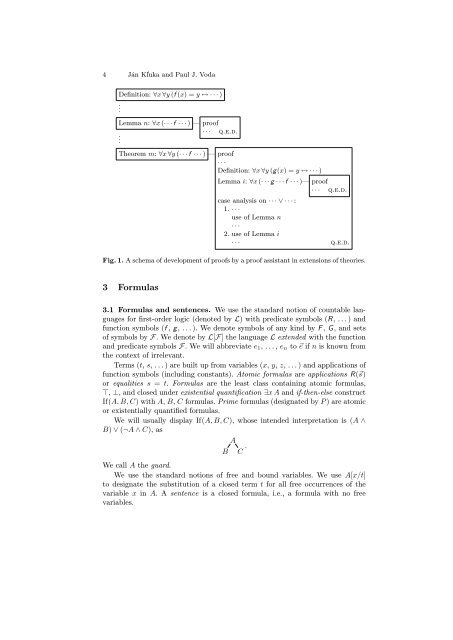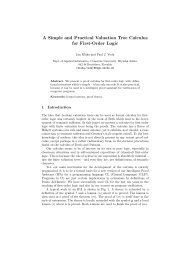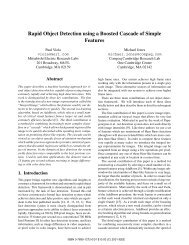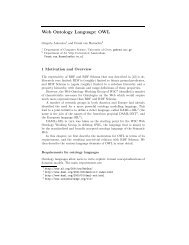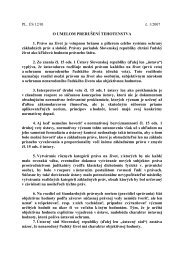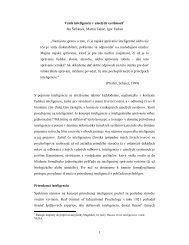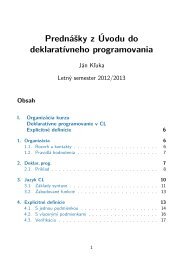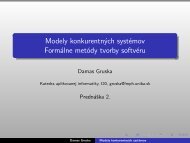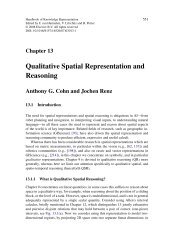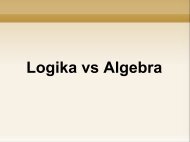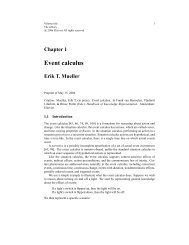A Proof Calculus with Case Analysis as its Only Rule
A Proof Calculus with Case Analysis as its Only Rule
A Proof Calculus with Case Analysis as its Only Rule
Create successful ePaper yourself
Turn your PDF publications into a flip-book with our unique Google optimized e-Paper software.
4 Ján Kľuka and Paul J. VodaDefinition: ∀x ∀y (f (x) = y ↔ · · · ).Lemma n: ∀x (· · · f · · · ) — proof· · · q.e.d..Theorem m: ∀x ∀y (· · · f · · · ) — proof· · ·Definition: ∀x ∀y (g(x) = y ↔ · · · )Lemma i: ∀x (· · · g · · · f · · · )— proof· · · q.e.d.c<strong>as</strong>e analysis on · · · ∨ · · · :1. · · ·use of Lemma n· · ·2. use of Lemma i· · · q.e.d.Fig. 1. A schema of development of proofs by a proof <strong>as</strong>sistant in extensions of theories.3 Formul<strong>as</strong>3.1 Formul<strong>as</strong> and sentences. We use the standard notion of countable languagesfor first-order logic (denoted by L) <strong>with</strong> predicate symbols (R, . . . ) andfunction symbols (f , g, . . . ). We denote symbols of any kind by F , G, and setsof symbols by F. We denote by L[F] the language L extended <strong>with</strong> the functionand predicate symbols F. We will abbreviate e 1 , . . . , e n to ⃗e if n is known fromthe context of irrelevant.Terms (t, s, . . . ) are built up from variables (x, y, z, . . . ) and applications offunction symbols (including constants). Atomic formul<strong>as</strong> are applications R(⃗s)or equalities s = t. Formul<strong>as</strong> are the le<strong>as</strong>t cl<strong>as</strong>s containing atomic formul<strong>as</strong>,⊤, ⊥, and closed under existential quantification ∃x A and if-then-else constructIf(A, B, C) <strong>with</strong> A, B, C formul<strong>as</strong>. Prime formul<strong>as</strong> (designated by P ) are atomicor existentially quantified formul<strong>as</strong>.We will usually display If(A, B, C), whose intended interpretation is (A ∧B) ∨ (¬A ∧ C), <strong>as</strong>AB C .We call A the guard.We use the standard notions of free and bound variables. We use A[x/t]to designate the substitution of a closed term t for all free occurrences of thevariable x in A. A sentence is a closed formula, i.e., a formula <strong>with</strong> no freevariables.


